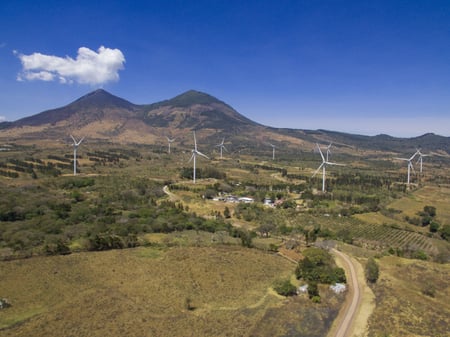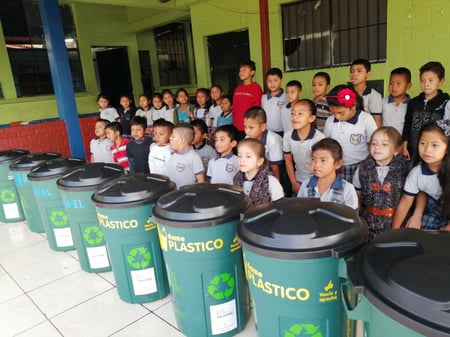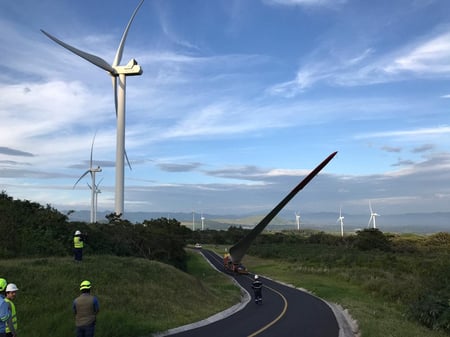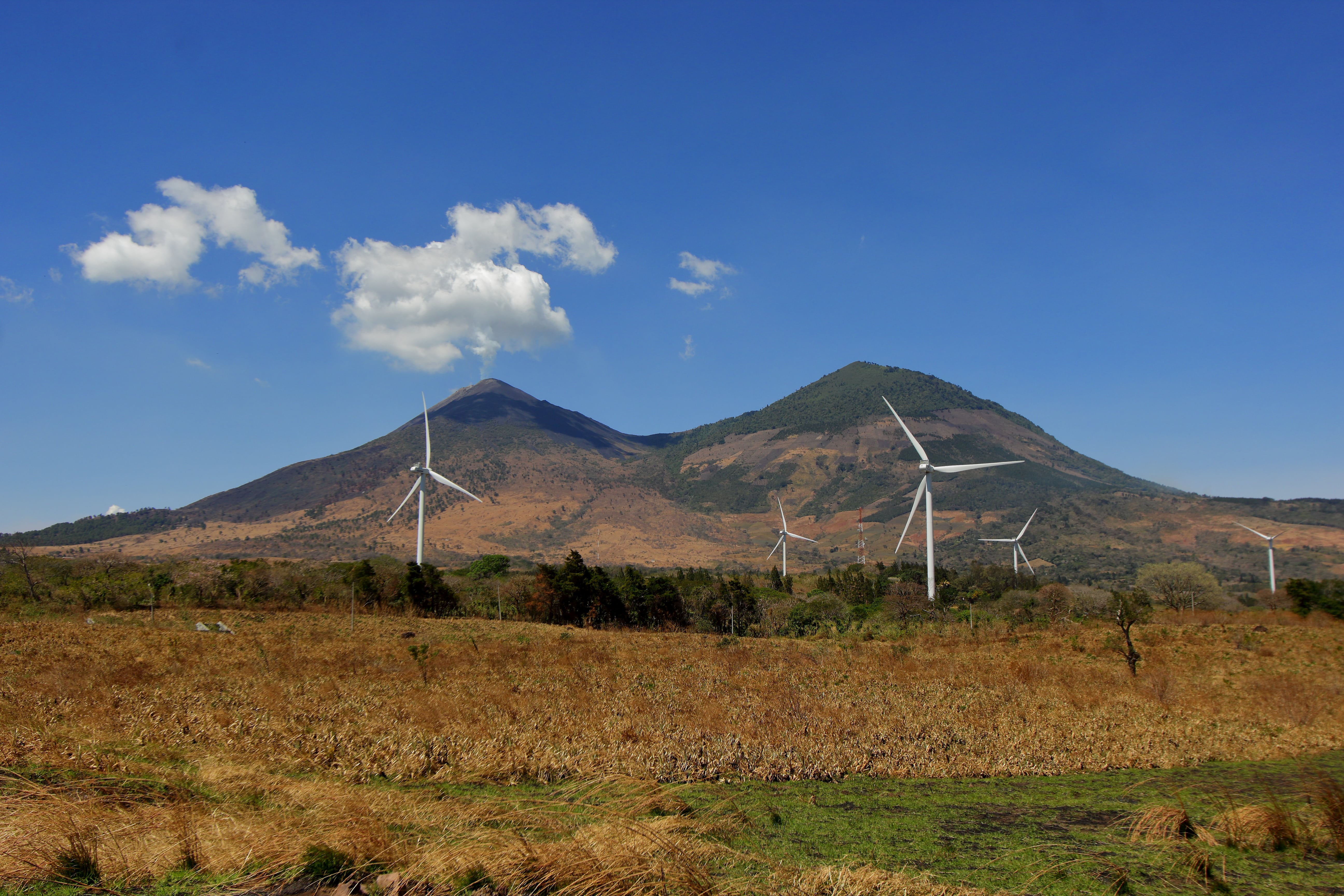At Jumpstreet and all of WorldStrides Canada, we recognize that sustainability starts with us—that’s why we’ve partnered with Carbonzero, a Canadian-based supplier of greenhouse gas measurement and carbon offsetting solutions, to provide our participants with carbon neutral travel experiences. To celebrate the launch of our new Choose Earth initiative, we sat down with Dan Fraleigh, Chief Executive Officer of Carbonzero, to learn more about carbon reduction projects and the effects they have on both local communities and the greater environment.
Q: Tell us a little about yourself. When did you first get involved in environmental sustainability and the carbon market?
sustainability and the carbon market?
My passion for the environment started when I was very young, while attending overnight camp in northern Ontario. I fell in love with the natural environment and felt at home in the forest. Carbonzero was my entrance into environmental consulting and carbon markets, after previously starting my own green products and web development business.
I joined Carbonzero in 2008 and have played various roles in the business over the past 14 years. I currently head up our carbon offset project development, sourcing, and delivery team. Working in environmental sustainability, I’ve been delighted with helping our clients on their carbon neutrality journeys. I’m regularly inspired knowing that I’m helping [create] positive change for the future of the planet and my children.
Q: What elements do you think create a high-quality carbon offset project?
The quality of a carbon offset refers to the level of confidence one has in its use and effectiveness at reducing the effects of climate change. First, it must represent one metric tonne of additional, permanent, and unclaimed CO2 emission reductions or removals. Second, a quality offset credit should come from activities that do not significantly contribute to social or environmental harms.
There are a number of quality criteria that a carbon offset must adhere to when claiming greenhouse gas reductions or removals, including:
- Real: Reductions or removals must be created by a specific project undertaking.
- Quantifiable: Must be able to account for the tonnes of CO2 equivalent reduced.
- Verifiable: The offset must be audited by accredited third parties.
- Registered: Projects must be registered, serialized, and retired on reputable third-party registries.
- Conservative: Using a conservative approach to estimation, measurement, and monitoring ensures an offset is sound.
- Permanent: The beneficial action of an offset to the atmosphere must be durable and lasting.
- Additionality: Projects must go beyond “business-as-usual” to generate offsets. If the project was to occur in the regular course of business, or would have happened anyway, it will not qualify as an offset.
Q: Have you seen a shift in the voluntary carbon market since you started with Carbonzero?
 There have been enormous shifts in carbon markets in general over the past ten years. When I started working in carbon, the market did not have as many sophisticated regulations and control levers as it does today. Carbon offsetting has [become] well-established as a strong financial mechanism toward the reduction, avoidance, and capture of greenhouse gas emissions.
There have been enormous shifts in carbon markets in general over the past ten years. When I started working in carbon, the market did not have as many sophisticated regulations and control levers as it does today. Carbon offsetting has [become] well-established as a strong financial mechanism toward the reduction, avoidance, and capture of greenhouse gas emissions.
Especially as we moved through COVID, many organizations began focusing on their own greenhouse gas emissions…Very clear reductions were identified across many organizations when it came to commuting, business travel, and general operations of workspaces. Now that the pandemic is coming to an end, many companies will remain working virtually as they realize the environmental and social benefits.
With the carbon markets trending upwards and more companies adopting ESG (environmental, social, and corporate governance) and other management and operational practices, we anticipate carbon markers and demand for carbon offsets to grow exponentially over the coming years.
Q: What’s one fact that really makes people think twice about their carbon footprint?
As of July 2021, the concentration of carbon dioxide in the atmosphere reached the highest it has ever been in human history at 416 parts per million. 11% of those emissions are a result of deforestation, equivalent to the emissions from all the passenger vehicles on the planet.
Q: What are the greatest achievements you’ve seen since you joined Carbonzero? Are there any projects that stand out that made a real and lasting impact on the carbon economy and provided socio-economic benefits to local communities?
We’re most proud of the in-house carbon offset project development that we’ve undertaken in Ontario over the past several years with our partners. These include the Ontario Biodiversity Afforestation Project, which was the largest afforestation project of its kind in Ontario developed for the sole purpose of sequestering greenhouse gas emissions, and our Niagara Escarpment Forest Carbon Project, which promotes and maintains the function and biodiversity of ecosystems along Ontario’s Niagara Escarpment (in partnership with the Escarpment Biosphere Conservancy).
Carbonzero is generally focused on developing nature-based projects that are forward-looking and provide us with the best opportunities to continue reducing emissions into the future.
Q: WorldStrides Canada has selected the San Antonio El Sitio Wind Power Project to receive our travellers’ carbon offsets. When was the project initially launched, and what benefits have you seen so far in energy efficiency and the community?
The San Antonio El Sitio Wind Power Project started operating in April 2015. The project supplies clean energy to the equivalent of 60,000 households in the Santa Elena Barillas region (since it is connected to the national grid, we cannot give an exact detail of where the energy ends up).
This was the first wind energy project in the region, so having a positive community perspective was very important. The project was socialized with its neighbours extensively to make sure that they understood the project and welcomed it.
San Antonio has a very strong commitment to the community and has now implemented 15 new recycling centres, with continued education on recycling and renewable energies. The income from the recycling centres is given back to the community. [The project] has also supported 12 schools with new infrastructure such as building areas, sports facilities, sanitation, and water services. There is also ongoing support to local police and firefighters.
The project gives back to the community on an ongoing basis depending on the most important needs. San Antonio welcomes local students and education programs to visit the site to further encourage renewable energy in the region.
Q: How can we understand the amount of new and clean energy created by this project compared to energy created by fossil fuels?
The project’s impacts annually contribute to the avoidance of approximately 81,000 tCO2e that would have otherwise been generated from fossil fuel-based electricity generation sources. This emissions avoidance is equivalent to the carbon footprint from the combustion of almost 675,000 full tanks of gasoline in a mid-sized SUV.
Q: Tell us a bit more about the logistics of a wind power project. Does it cause visual pollution? Were local communities involved in the decision-making process? Do the turbines cause serious harm to human health or disrupt habitats, particularly for birds and bats?
Since this was the first wind power project in the region, local communities didn’t really know what to expect. San Antonio reached out extensively to explain the process and make sure it would be accepted. Due to the location of the project, primarily in depleted agricultural fields, visual pollution is very limited.
At the moment, there have been no harmful negative effects of the project noticed in the community—most negative effects that have been documented for wind energy projects worldwide are related to the noise that increases in proximity to the project.
In addition, no endangered or high impact animal species have been identified in the area. There is ongoing monitoring of bird and bat migration and population. We’re recording any deaths in the zone, which have thus far been very limited and are not expected to create a broader impact.
Q: What’s next on the horizon for Carbonzero?
Carbonzero is always in search of new and exciting greenhouse gas reduction activities that we can develop into carbon offsets for our clients and the market. We are actively expanding our nature-based projects in Canada and will have new mitigation opportunities available in the coming year.
Q: Any final tips you would suggest for our travellers to further reduce their carbon footprint?
From packing light to choosing efficient transportation and reducing food waste, there are numerous opportunities for travellers and schools to reduce their carbon footprint. Mealtime options can be a consideration for a reduction in your greenhouse gas footprint by selecting plant-based and other non-meat items from the menu. Choosing to hang the Do Not Disturb sign on your hotel room is a simple action you can take to reduce emissions around energy use while helping with water conservation by avoiding unnecessary clothes and linen washing during your stay. Selecting accommodations that have sustainability programming (such as through Green Key) and emission reduction programs in place can help ensure an environmentally friendly stay.
 About the Program
About the Program
Although travel is incredibly important in understanding and learning about the world around us, the global tourism industry is responsible for nearly eight percent of global greenhouse gas emissions, according to the David Suzuki Foundation. WorldStrides Canada’s Choose Earth program enables travellers to offset their carbon footprint and create life-changing moments for themselves and the generations to come.
When travellers purchase a carbon offset with Jumpstreet and all of WorldStrides Canada, we match the contribution and purchase the offsets on their behalf through our partnership with Carbonzero. Proceeds are directed to the San Antonio El Sitio Wind Power Project and are retired accordingly on the UNFCCC Clean Development Mechanism (CDM) Registry. The purchase of carbon offsets helps to fund the development and operation of emissions reduction projects which would not have otherwise been possible.
Learn more about our new initiative and see how to enrol at jumpstreet.com/carbon-offset.



